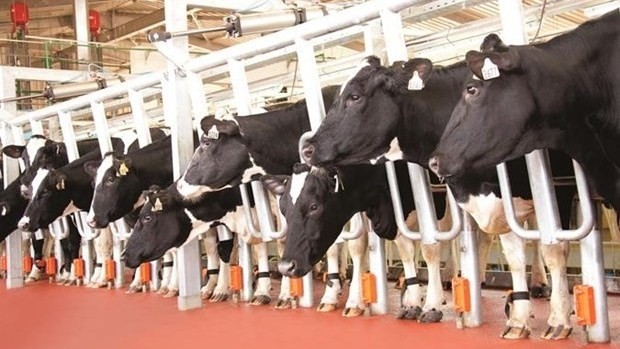At the ceremony, TH Milk signed a contract to ship the first batch of dairy products to China with its Chinese partner, Wuxi Jinqiao International Food City. Under the contract, the two sides will cooperate in distributing milk products in all provinces and cities across China via wholesale, retail and supermarket channels.
TH Milk Joint Stock Company became the first Vietnamese firm to receive approval from the General Administration of Customs of China to export dairy products to China. Its sterilised and modified milk products have been granted transaction codes.
This was considered an important event for the agricultural sector in general, and the dairy industry in particular, in efforts to boost high-quality farm produce exports to potential markets, especially China.
The export of milk usually requires strict conditions. In order to encourage the world's most populous market accept Vietnamese dairy products, on the one hand, dairy enterprises in general, and TH Milk Joint Stock Company in particular, must urgently deploy the contents of the Protocol.
On the other hand, enterprises should actively invest in building concentrated farm models, applying high technologies in production and administration in order to fully meet the standards and strict regulations on veterinary and public health of the market.
However, the number of dairy cows in the country is currently totals at about 330,000. Milk production and consumption in Vietnam is still low compared to other countries in the world, on average about 20 litres per person a year, while the world’s rate is 80 litres per person a year.
According to the Livestock Production Department, Vietnam plans to have 500,000 dairy cows and a million tonnes of milk in 2020, a growth of more than 11%. It also plans to have 700,000 cows and two million tonnes of milk by 2030.
In order to meet both domestic demand and expand export opportunities, in the immediate future, dairy export revenue from the neighbouring country should be increased from US$120 million to US$300 million in 2020, the Ministry of Agriculture and Rural Development should direct the breeding industry to coordinate with localities, businesses and dairy farming households to increase investment and develop dairy cattle. At the same time, more attention should be paid to northern mountainous provinces which have many advantages in natural pastures and cattle raising habits.
To increase profits and lower costs for farmers and in line with the development orientation of farming households, localities should proactively accelerate the restructuring of the animal farming sector towards industrial scale, improving added values of animal products, and developing processing industry in order to meet the regulations on supervision, management, testing and quarantine of dairy products for import and export not only for the Chinese market but also for many other potential markets, such as Japan, Canada, Australia, the US, and Thailand, among others.
















